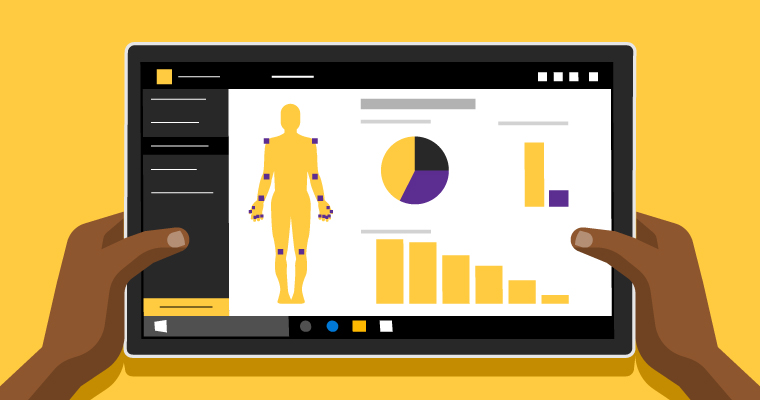
How Allen Arthritis perfected the patient experience
Dr. Lavery has headed his rheumatology practice, Allen Arthritis, for the last 18 years, treating various rheumatic diseases such as lupus, tendinitis, and a wide range of arthritic conditions. With four employees, the small office treats anywhere from 20-25 patients each day, in addition to filling prescriptions, managing lab results, and managing long- and short- term treatment plans for their patients. After nearly two decades of providing care, Dr. Lavery wanted to explore the benefits of cloud technology to increase efficiency, improve productivity, and empower his small team.

Improving internal processes and electronic health records with the cloud
Allen Arthritis previously relied on an on-prem server to store and maintain their patient data along with an extensive digital library of medical resources. The practice often struggled with server downtime which resulted in the clinic being unable to see patients. As part of Allen Arthritis’ digital transformation, Dr. Lavery and his team worked with US Medical IT, a Microsoft Partner, to migrate their patient data into a cloud-based Electronic Medical Records (EMR) system and adopted Office 365 as their secure communications and digital storage platform. This cloud migration combined with an affordable redundant internet solution has effectively eliminated the risk of outages or subsequent downtime.
The practice began their move to the cloud with an office-wide email migration before transferring their entire digital document library over to Office 365. Now the staff has access to a range of tools and features to enhance their internal processes. The small team leverages Skype for Business for more efficient and secure internal communication from anywhere in the office. OneDrive enables the team to keep important documents organized and secure. And with Office 365’s easy-to-navigate infrastructure, staff can quickly save and access useful documents like billing info, lab documentation, liability insurance, and modern medical studies that can inform treatment plans.
“If I have specific medical articles or former treatments or protocols for medication I want to go back to, I can upload it onto OneDrive and then access it later right there in the patient’s room,” says Dr. Lavery
Migrating away from paper-based administration
Previously, Allen Arthritis relied on paper documents for their patient files and medical charts. During the intake process, patients had to fill out sheets of paper by hand. Staff then had to review the data, compile everything manually, and scan each page to transfer the information to their online system. The process was time consuming and inefficient, requiring an estimated 5-10 minutes per patient in administrative work. Sometimes, the time delay even led to a backlog of data, preventing Dr. Lavery from accessing valuable patient information. In addition, using a paper-based system left them vulnerable to human error and the possibility of misplacing sensitive medical documents.

Using cloud innovation to streamline entire patient experience
Technology partner US Medical IT built a custom application with PowerApps for Allen Arthritis, empowering their staff to successfully manage their electronic health records while improving connectivity and enhancing their internal processes. Patients are given a tablet when they walk in where they can fill out forms, and other medical documents and assessments have been digitized to reduce the use of paper. Patient scores and numerical data are calculated automatically and made immediately accessible to staff, removing time delays and the possibility of human error.
By eliminating the need to gather, review, and scan information, Allen Arthritis’ staff has increased their efficiency and productivity without sacrificing quality of care. With this new process in place, they’ve cut 2-4 hours of daily administrative duties, enabling Dr. Lavery to see an additional 3-5 patients per day. Transferring the practice’s system to a HIPAA-compliant cloud platform also boosts security and gives the staff peace of mind.
“With the cloud, I don’t have to worry about being exposed to any HIPAA violations with medical files laying around,” explains Dr. Lavery. “Any data interactions we have with patients are all in the cloud.”

Discovering valuable patient trends to optimize care with Power BI
As part of their digital transformation, Allen Arthritis also adopted Power BI to optimize patient data and reveal timely insights. Power BI’s technology can analyze data and present trends with easy-to-understand, visual metrics like graphs and diagrams. The data can even be broken down by week, month, or year to better understand patient history and identify progress.
For example, lab results can take seven days to complete, and a separate technician is required to determine results for ultrasounds. In comparison, Power BI gives Dr. Lavery’s medical team immediate access to valuable health trends and patient metrics right in the office. Dr. Lavery can also use these insights to determine health risks, develop long-term plans, and better understand how specific treatments impact patients over time.
“Making this information available in real time allows me to understand the patient’s condition and make decisions before I walk in the door to see the patient,” Dr. Lavery explains. “I can narrow down what I’m supposed to do, and it’s made a big difference in the practice.”
Integrating data-driven insights into the future of healthcare
After experiencing the benefits of data analytics in his own practice, Dr. Lavery’s advice for his peers is to be open to exploring how patient data and healthcare metrics can transform the delivery of care. Quantifying patient care enables healthcare teams to improve care with more personalized patient experiences and treatment plans. At Allen Arthritis, optimizing data empowers the small staff to make informed decisions, effectively address the needs of their patients, and increase efficiency—all while delivering the best care to every patient who walks in the door.





